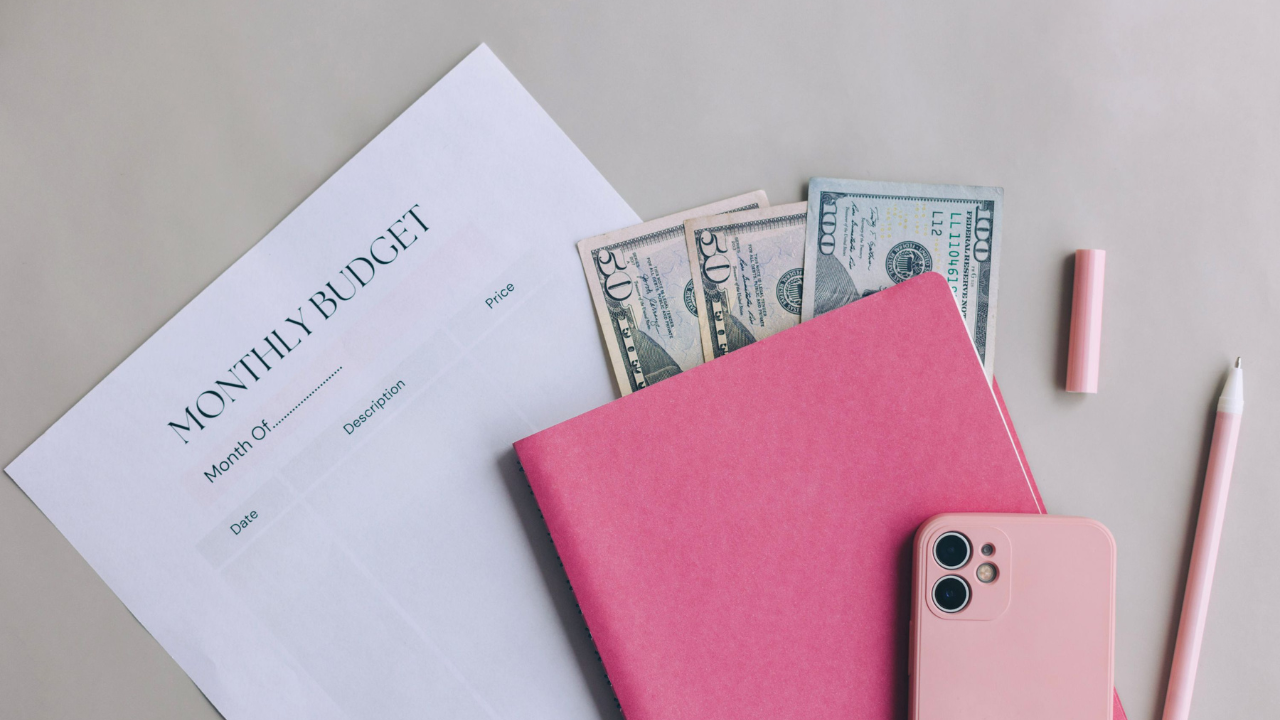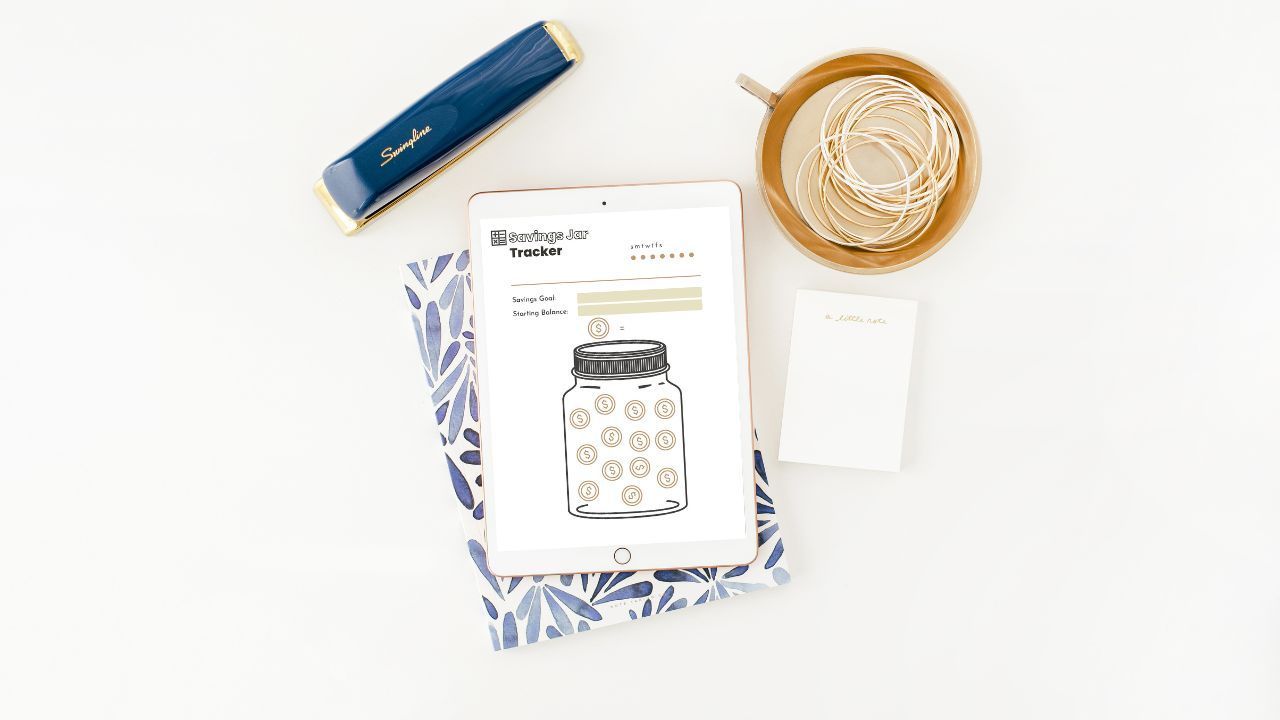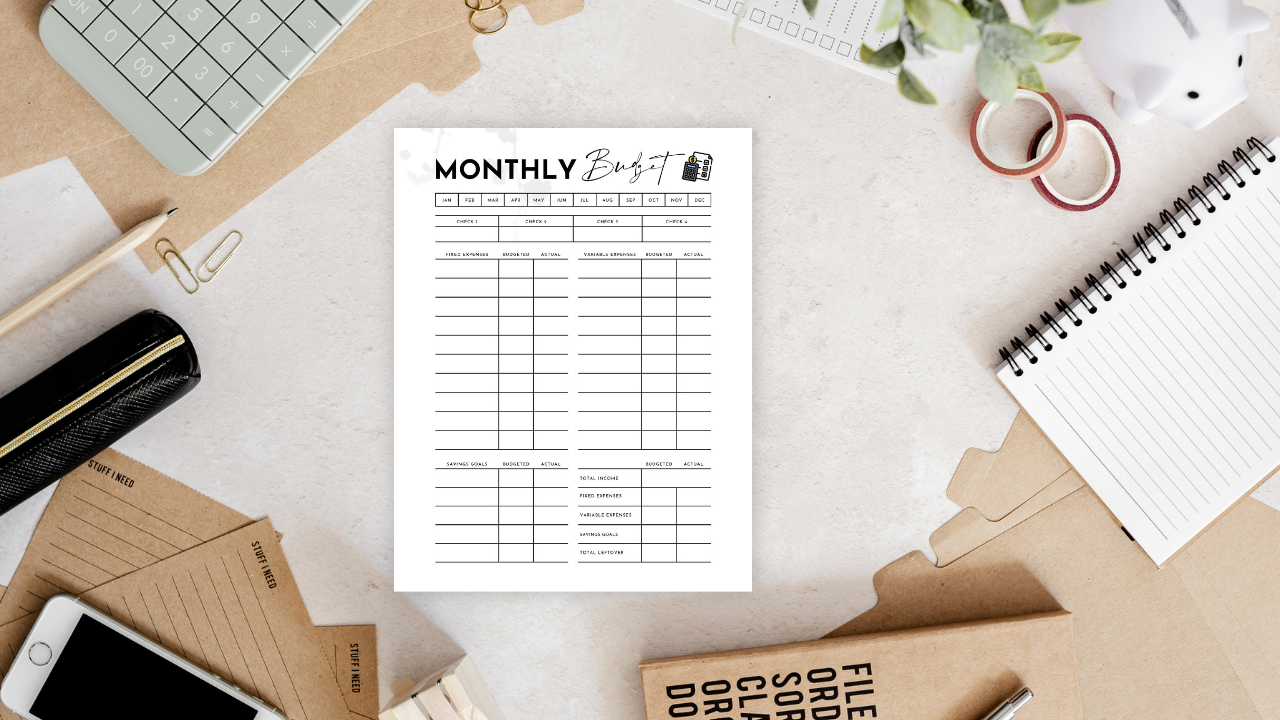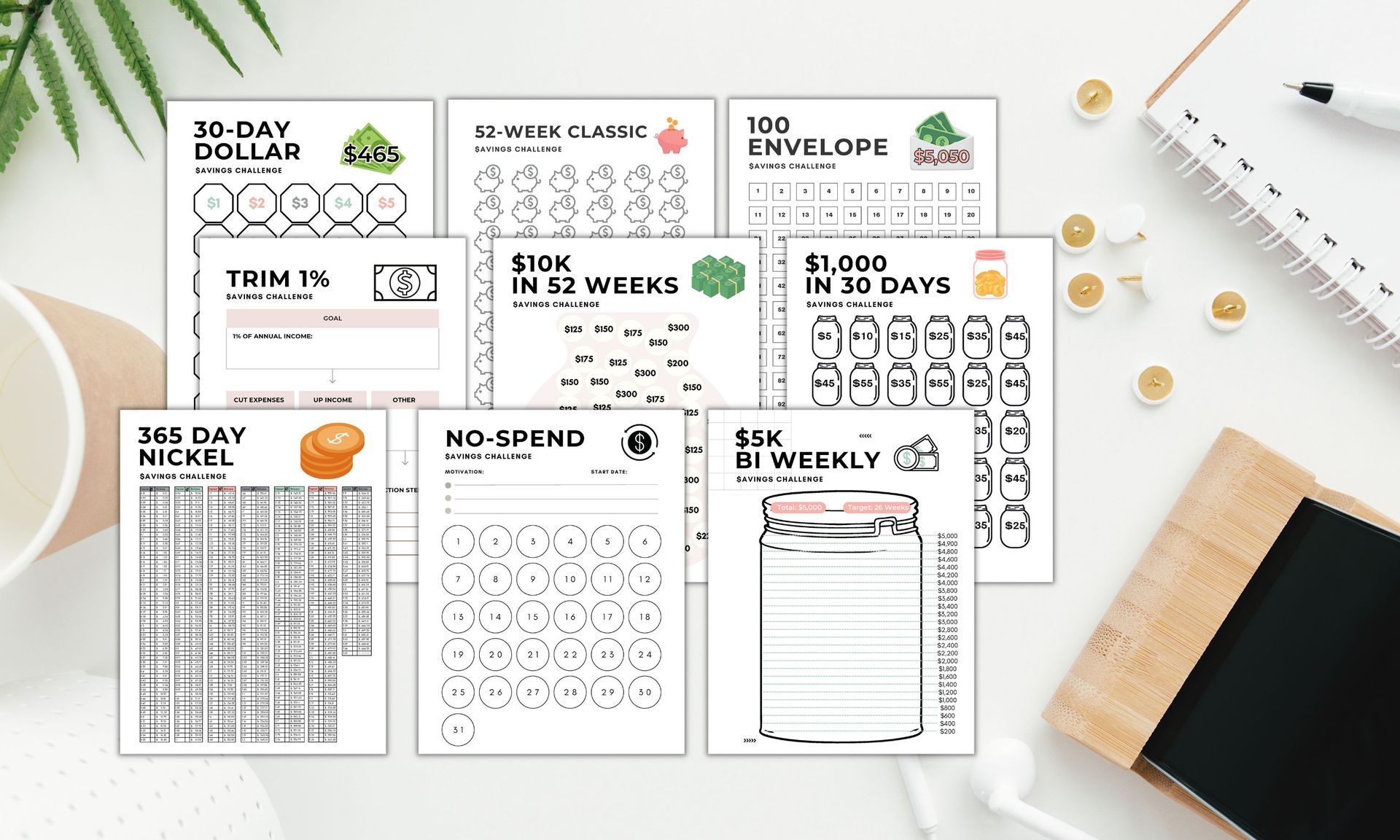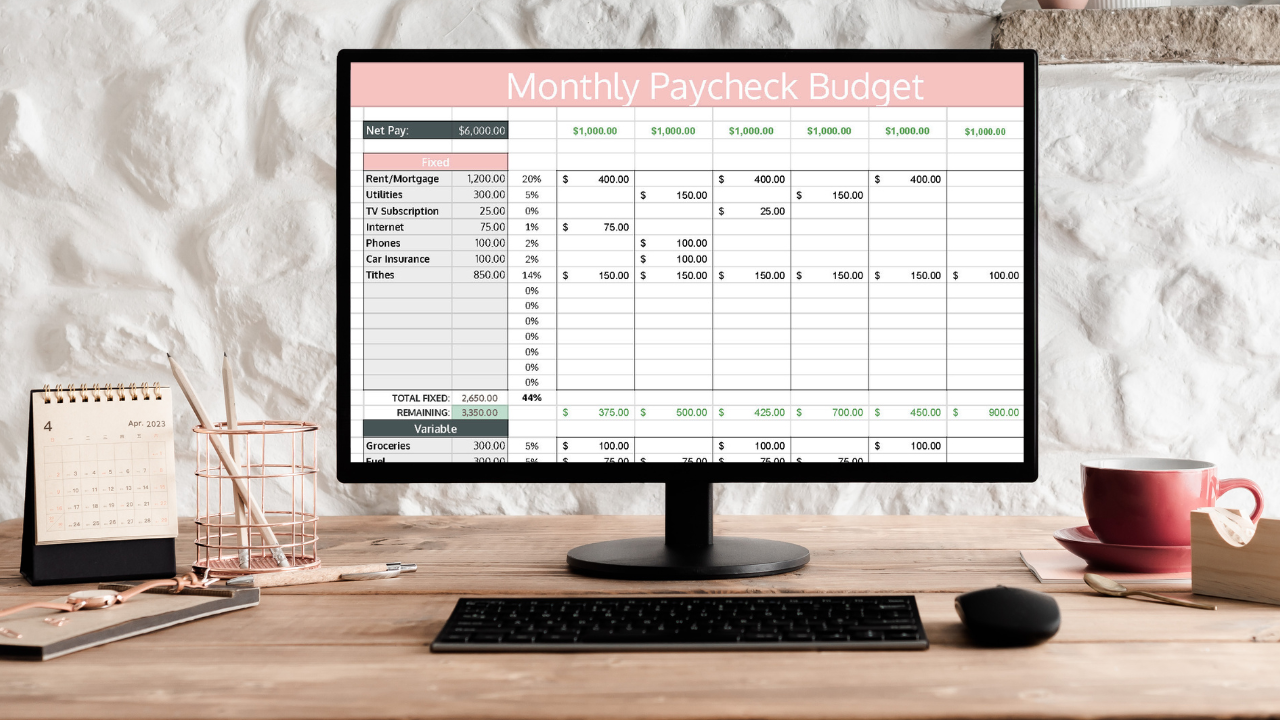
Melanie
De Jong
Melanie
De Jong
Hey There, I’m Melanie! I am a former CPA turned personal finance blogger and mom of three. When you ‘Budget With Mel’, you’ll develop monthly budgets, cost-cutting tactics, and learn new behaviors and beliefs about money. It’s time you took the stress and confusion out of your personal finances.
Hey There, I’m Melanie! I am a former CPA turned personal finance blogger and mom of three. When you ‘Budget With Mel’, you’ll develop monthly budgets, cost-cutting tactics, and learn new behaviors and beliefs about money. It’s time you took the stress and confusion out of your personal finances.
How to Set Up Sinking Funds + Free Printable Template
In any given month, it's fairly simple to determine your expenses because many are predictable in nature. But what about the non-monthly expenses that pop up, throwing your budget plan for the month out the window?
The good news is there is a great solution to make sure that irregular, seasonal, and unexpected expenses don't sneak up on you!
The easiest way to save for these expenses is by setting up sinking funds. Stick with me here-- it sounds complicated but it's a simple process with a big payoff!
Picture this. It’s December 23rd. You’re at the store in a frantic and panicked state trying to figure out your last minute Christmas gifts.
What is a Sinking Fund?
Sinking funds are a strategic way to plan for both unexpected expenses, and larger expected expenses by setting aside a little bit of money every month for them.
They work like a savings account, the main difference being that sinking funds are very specific. With a sinking fund, we have a certain specific expense that we are saving for.
A sinking fund is different from an emergency fund in that emergency funds are for unknown, larger expenses while we know what expenses we are saving for with our sinking fund-- even if we don't know exactly when the expenses will hit. The goal with a sinking fund is to completely save up for future fixed expenses and to at least have a start for future unknown, variable expenses; such as a pipe that burst or an AC unit that goes out.
When establishing a sinking fund, we are creating a fund (budget category) for a specific purpose that will be carried over from month to month. This is different from other budget categories like groceries for example, because if we are over/under on our grocery budget for the month, the remaining either goes to savings or a different category, and any shortage for the month must be covered by excess in another budget category.
Why Do You Need Sinking Funds?
The major benefit of sinking funds is that they allow us to save up for large, expected or unexpected expenses over time rather than trying to cash-flow them in a single month.
When budgeting, we want to capture our true expenses. Consequently, we must determine not only our monthly expenses, but our non-monthly expense that fall outside our normal monthly budgeting routine. Otherwise, we'll be consistently frustrated because it will appear our budget isn't doing it's job. We'll have expense after expense come up during the month, threatening to blow our budget; and we'll be left wondering why the budget isn't working like it's supposed to. The problem is we haven't accounted for our true expenses, which include both monthly and non-monthly expenses, and known and unknown future expenses.
Having sinking funds allows us to separately track our progress for certain budget categories and savings goals that are not monthly, recurring expenses.
How to Set Up & Track Sinking Funds
1) Determine future expenses to save up for
Sinking funds should be set up for a few different types of expenses -- savings goals, known non-monthly expenses (quarterly, semi-annual, or annual expenses), in addition to unknown, unexpected expenses. More extensive instructions on exactly how to set up these funds later. First, let's establish what funds are needed to keep our monthly budget running smooth.
To name a few, we have sinking funds set up for Christmas, appliances, a new car, home repairs, other gifts (birthday, wedding, etc), and vacations.
Sinking fund examples:
- Car maintenance & repairs: new tires, oil changes, etc.
- Home remodel: renovations are on many homeowners lists, start setting aside money every month so you can cash-flow as you go.
- Home repairs: When you're a homeowner, you learn quickly that things break, often! In addition, there's always something that will need replacing. Start setting aside money for new appliances, a new roof, etc.
- Car replacement: vehicles need replacing ,and if you want to upgrade, it's a good idea to start saving as soon as possible.
- Gifts: birthdays, anniversaries, showers, weddings, etc.
- Furniture & appliances: replacement for furniture as it wears and tears over time
- Vacations: Instead of putting your trip on a credit card, save up and pay cash!
- Insurance dues (semi-annual or annual): car insurance, homeowners insurance, disability insurance, etc.
These are just a few- you can tailor this list to your needs. Sinking funds can be a great way to break down any financial goal into into a smaller, monthly goal. Start with your money goals in mind, and from those goals determine what funds you need.
2) Calculate how much to set aside each month
Once we've determined what sinking funds we need, it's time to determine the monthly breakdown for each individual fund. The sinking fund formula is simple:
Total amount needed (or goal amount) / number of months until due date (or target date) = amount to budget monthly
It's important to work backwards when setting up sinking funds. In other words, determine how much needs to be saved in total first, then determine the monthly amount.
Known expenses
Many expenses are foreseeable, making setting up sinking funds fairly simple. Of the known future expenses, some we will know exactly how much we need to set aside (annual insurance premiums), and others we will just have to set a goal (vacation, Christmas, new car fund, etc.).
For example, if the goal is to save $2,000 for your family vacation that is 10 months away, that would require putting $200 per month in a vacation sinking fund.
Another sinking fund idea is Christmas. If it would be nice to have $1,200 for Christmas to spend on gifts, festivities, holiday parties, etc., then a sinking fund is perfect to ensure that the money is there when December rolls around. The calculation to set up the Christmas sinking fund in this scenario is as follows: $1,200/12 months equals $100 per month to be budgeted towards a Christmas sinking fund. $100 per month seems a lot more attainable than $1,200!
When we break our savings goals down into smaller chunks, it helps us stay focused and motivated, believing we can actually do it.
Unknown expenses
On one hand, we have certain expenses that are a specific amount we are saving for in order to fund the specific expense by a certain due date. On the other hand, we have expenses we are saving for that have no due date and no set amount we need to save. These expenses require a little more guesswork-- how much should be set aside for home repairs? Car repairs?
There are two ways to determine how much to set aside. First, if there isn't much wiggle room in the budget, simply divvy up what's left after budgeting for necessities amongst the sinking funds. The second way is to allocate a percentage of income (this works well if there is a lot of disposable income to work with) to each fund.
3) Put it in the budget
In order to have any sort of success financially and become financially free, not only do you need to use sinking funds, but you will need a written budget. A budget is non-negotiable. We've lived on half of our income before thanks to budgeting. It's possible! You just have to be willing to take the first step, which is to take inventory and be honest with where things are at. Once you do this and start planning out every monthly expense, you'll suddenly feel like you're taking control of your money and telling it what to do instead of letting it control you!
- Create a budget category for sinking funds.
- List all your sinking funds as sub-categories.
- Write down per-month about to budget for each.
- Carry the balance over month to month.
- Track any changes (deposits + withdrawals).
- Evaluate budget often for any new sinking funds needed.
Start budgeting with my very popular google sheets budget template 👇🏼
4) Download the free sinking funds tracker
When we have multiple things that we are saving for- braces, a new car, Christmas, etc., it can be convenient to just lump all our savings together. However, as time passes, it is easy for the lines to blur because of the disorganization. Soon enough it's hard to tell how much is set aside for each future expense. Because of this, keeping track of your sinking funds is essential to successfully managing your monthly budget. The best way to do this is to keep a simple sinking fund spreadsheet or worksheet.
You can download my free printable sinking fund tracker to help efficiently and effectively manage your funds. This instant digital download will help you efficiently track how much money you have set aside for each fund!
Where to Keep Your Sinking Funds?
I recommend setting up a separate savings account for larger sinking funds. For smaller funds, keeping them in your checking account is perfectly fine, so long as you are keeping good track of the balances and reconciling your account often. Depending on the balance and timeframe of the fund, you may want to keep some of your sinking funds in a high-yield savings account. Like a traditional savings account, you have access to your funds whenever, wherever, and you get an above-average interest rate (4-5%) on your savings. However, they often require a minimum balance to be maintained to get the highest interest rate. A high-yield savings account works well for any sinking fund account with a high-dollar balance and long-term timeframe.
Most Importantly
Sinking funds are a great way to keep murphy away. When you establish these funds, you are prepared for any rainy day! It seems like such a simple concept, and it is, yet so many people go through life constantly being hit by murphy and consequently constantly stressed when large expenses come (sneak) up! Establish your sinking funds right now, and don't forget to snag my free template!

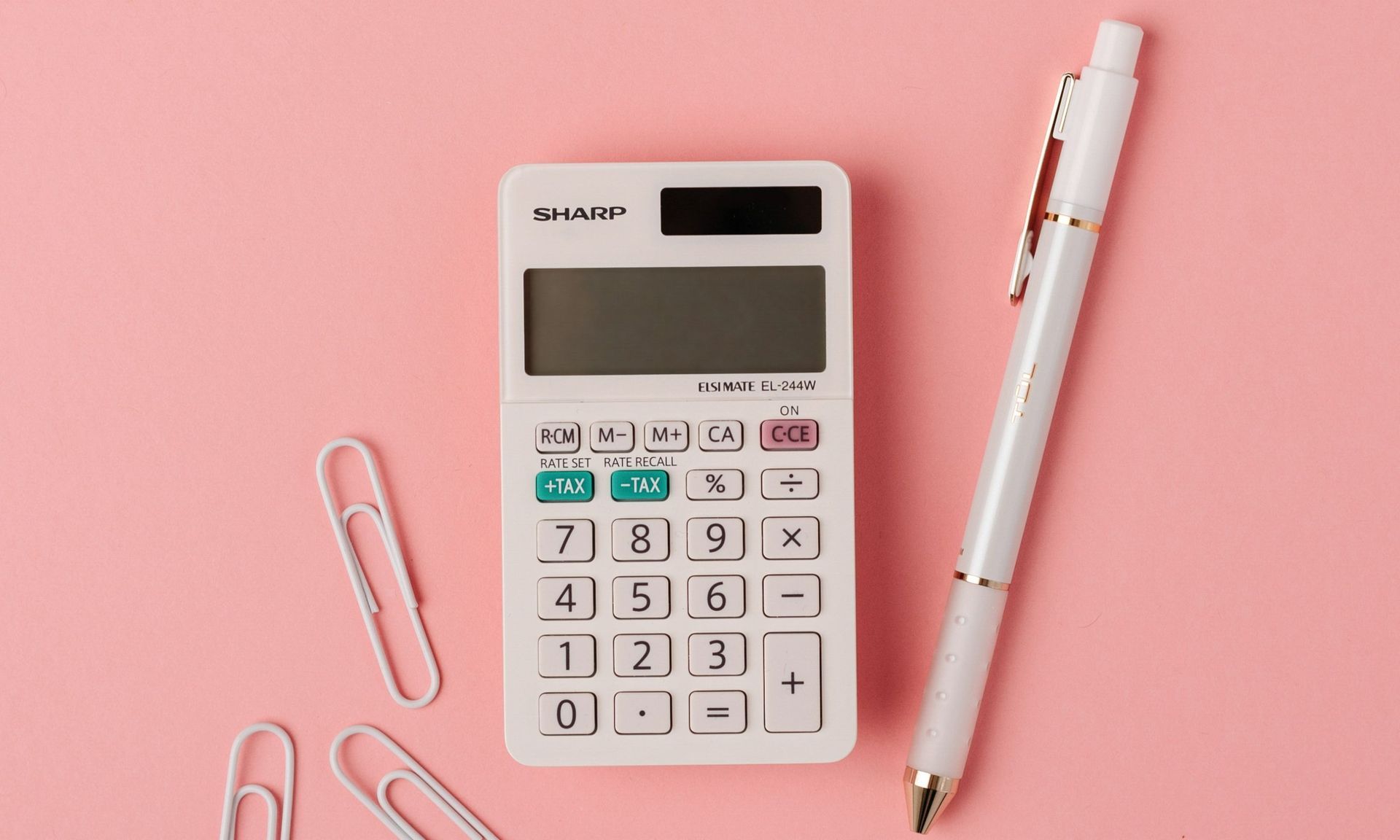
FOLLOW
ON IG









